Disrupting for Good: AI, ...
Online Conference
28 Jan 2026 / 29 Jan 2026 read more
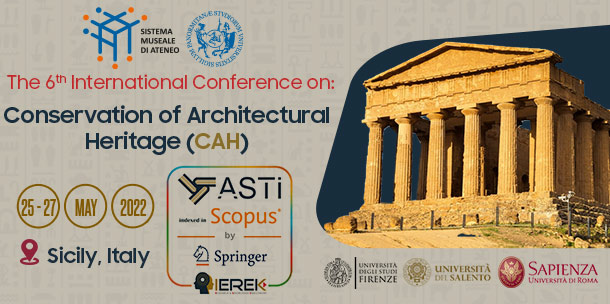

Prof. Maria Luisa Germanà
Professor at the Department of Architecture, University of Palermo.
The World Association of Professional Scientists (WAPS) is a community alliance that consists of scientists, academics, and experts in diversified fields.
Members of WAPS could participate in IEREK's conferences as session moderators, keynote speakers, or conference chairs.
You can know more about WAPS members from HERE.
Subscribe to our newsletter
The 6th Edition of the conference on "Conservation of Architectural Heritage" (CAH-2022) takes on a new vision as it is held as a hybrid event taking place from 25-27 May 2022with the University of Palermo - Italy. In continuation of the same previous concept, which is merging the study with application, the conference includes sight-seeing and visits to the Mediterranean’s heritage architecture and archeological sites in Sicily. Such sites include visiting a few of the most historical places such as Le città tardo barocche del Val di Noto, Arab-Norman Palermo and the Cathedral Churches of Cefalú and Monreale, Area Archeologica di Agrigento, and Monte Etna.
The CAH conference aims to increase the awareness and the value of conserving our past and not just facing the posed challenges temporarily. The conservation and the protection of the heritage is not just the physical act of preserving and restoring our heritage, but also passing on the importance of heritage to the individuals, communities, and the cities of the world. Therefore, the conference offers a great opportunity that runs the discussion between participants about the different international case studies. A scientific gathering of scientists, governmental representatives, authors, and specialists will be involved.
The discussion and the conference topics will focus on the architectural heritage worldwide, from historic city centers and cultural landscapes to some of the largest archaeological sites in the world which contain the identity and the heritage of the city. Due to the importance of preserving this identity, conservation is the process of restoring, preserving, and managing the heritage, cultural, and historical site in a manner that sustains it and enhances its integration with the surrounding development.
The conference is purposed to be held as a hybrid event in case there were no travel restrictions due to the ongoing Covid-19 pandemic. You can choose to attend physically in Italy or online from the comfort of your home. The sightseeing is a part of the conference, and it is optional to the participants, but we highly encourage all of them to use this option. If lockdown or travel restrictions are applied and prevent the conference from taking place physically, it will become virtual. Even when virtual, full sessions will take place to present information about the archeological sites mentioned above. If the conference is online, the sightseeing tours will be replaced by online viewing, where an entire day of the conference will be dedicated to it.
Selected papers after the peer-review process will be published in a proceedings book in a series entitled Advances in Science, Technology, & Innovation (ASTI) by Springer which is indexed in Scopus. The remaining accepted papers will be published in ARChive journal by IEREK Press.
1.1 Preservation and investment of archeological sites.
1.2 Conservation of utopian heritage buildings
1.3 Transmitting the cultural heritage to next generation
1.4 Rehabilitation and reuse of historic buildings
2.1 Citizens’ sense of identity, belonging and archaeological ownership
2.2 The role of governmental bodies and NGOs in protecting heritage sites.
2.3 The socio-economic value and the significance of cultural heritage conservation
2.4 Tangible archaeology and intangible cultural heritage assets
3.1 New materials, innovative methods, and successful creative experiments
3.2 Conservation of interiors, Artistic paintings and engravings
3.3 Protecting and mapping techniques of archaeological sites and heritage landscape
3.4 Rays, ultrasounds, and other methods in buildings treatment
4.1 Women role in cultural heritage inheritance and conserving Ethics groups
4.2 Increasing the public awareness about the importance of the heritage
4.3 Community participation in historical areas development plans
4.4 Stories of the role of citizens in the reconstruction of the devasted heritage of the World War
5.1 Cultural heritage tourism
5.2 Socio-economic impact of heritage conservation
5.3 Impact of architectural heritage conservation on environmental protection
5.4 Governances’ plans in protecting in investing the assets heritage
6.1 “4.0 Technologies” in architectural heritage conservation
6.2 Climate changes and built heritage at risk
6.3 Reliable conservation processes
6.4 Planned maintenance of heritage buildings and sites.
All accepted papers of the Conservation of Architectural Heritage (6th CAH) after the peer-review process will be either published as chapters in the Book Series “Advances in Science, Technology and Innovation” (ASTI) by Springer or in The International Journal of Academic Research Community Publication (ARChive) online by IEREK Press.

The ASTI Book Series by Springer is by highly professional members of an International Editorial Board to ensure a high-quality publication material to be eventually published online and printable.
The ASTI Book Series is indexed Scopus and will be submitted for indexation in Web of Science (ISI) and EI-Compendex databases.
To publish your research in the online Journal or Book by 'Springer' and provide it with world-wide visibility, authors must submit an extended version of their short papers that are 8 -12 pages long.
If you are not sure whether you or one of your co-authors will be able to attend the conference, you should bear in mind that there is a fee to be paid for Audiences (Co-authors, Learners, and Interests). The accepted paper will not be included in the conference proceedings without paying the fee (see Conference Fees for more details). A research paper fee allows only one author, whether main or co-author, to attend the conference and receive only one copy of the conference abstract book in both hard and soft copies. Extras can be requested for a fee shown below.
Publishing in ASTI by Springer (Scopus indexed) 
After the conference, the submitted manuscripts of authors interested in publishing in the ASTI book series will undergo a rigorous peer-review process resulting in a final decision made by the editors. Only accepted research will be published as a chapter in the Book Series entitled “Advances in Science, Technology and Innovation” (ASTI) by Springer. The ASTI Book Series is by managed highly professional members of an International Editorial Board to ensure high-quality material for online publication.
The ASTI Book Series is fully indexed in Scopus. Some titles have been successfully indexed or submitted for indexation in Web of Science (ISI).
 |
 |
 |
 |
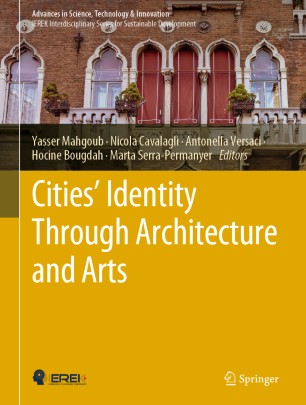 |
About the ASTI series
Advances in Science, Technology & Innovation (ASTI) is a series of peer-reviewed books based on important emerging research that redefines the current disciplinary boundaries in science, technology, and innovation (STI) in order to develop integrated concepts for sustainable development. It not only discusses the progress made towards securing more resources, allocating smarter solutions, and rebalancing the relationship between nature and people, but also provides in-depth insights from comprehensive research that addresses the 17 sustainable development goals (SDGs) as set out by the UN for 2030.
The series draws on the best research papers from various IEREK and other international conferences to promote the creation and development of viable solutions for a sustainable future and a positive societal transformation with the help of integrated and innovative science-based approaches. Including interdisciplinary contributions, it presents innovative approaches and highlights how they can best support both economic and sustainable development, through better use of data, more effective institutions, and global, local, and individual action, for the welfare of all societies.
The series particularly features conceptual and empirical contributions from various interrelated fields of science, technology, and innovation, with an emphasis on digital transformation, that focus on providing practical solutions to ensure food, water, and energy security to achieve the SDGs. It also presents new case studies offering concrete examples of how to resolve sustainable urbanization and environmental issues in different regions of the world.
The series is intended for professionals in research and teaching, consultancies and industry, and government and international organizations. Published in collaboration with IEREK, the Springer ASTI series will acquaint readers with essential new studies in STI for sustainable development.
About Springer:
Springer is a leading global scientific, technical and medical portfolio, providing researchers in academia, scientific institutions and corporate R&D departments with quality content through innovative information, products and services. Springer has one of the strongest STM and HSS eBook collections and archives, as well as a comprehensive range of hybrid and open access journals. Springer is part of Springer Nature, a global publisher that serves and supports the research community. Springer Nature aims to advance discovery by publishing robust and insightful science, supporting the development of new areas of research and making ideas and knowledge accessible around the world. As part of Springer Nature, Springer sits alongside other trusted brands like Nature Research, BioMed Central, and Palgrave Macmillan.
Click on the below image to learn more about the editors
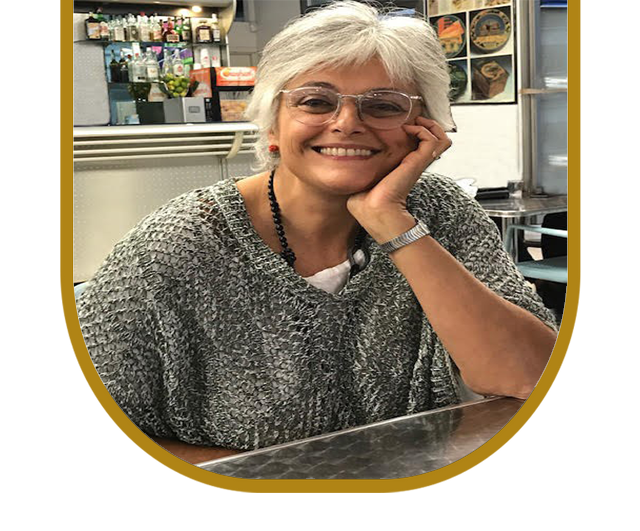
Maria Luisa Germanà is full Professor of Technological Design of Architecture. She is an architect and she earned her Ph.D. in Building and Environmental Refurbishment in 1992. With more than 20 years of academic experience, she has held several institutional roles in her University and in the national scientific society of architectural technology (SITdA). Professor Maria Luisa Germanà has more than 140 published books, chapters and articles and she has been invited as member of peer review board of national and international journals and of scientific council of book series. She has been principal investigator of international and national research projects. She has gained an extensive teaching experience, tutoring more than 100 bachelor, master degree and Ph.D. students. Her main themes of research (Architectural Heritage; Environmental Design; Rural and Vernacular Architecture; Ecological Building Materials; Refurbishment, Management and Maintenance of the Built Environment) are different facets of a holistic scientific interest, focused on the sustainability of the processes of formation, transformation and management of the most varied examples of built environment and based on the systemic and process-based approach supported by the technological disciplines. Lately she has joined ICOMOS and she has been admitted as Expert member of ICOMOS ICAHM (International Committee on Archaeological Heritage Management).

Degree in Building Engineering (University of Messina, Italy) and a Ph.D. in Architecture (University of Paris VIII, France). After being UNESCO international staff member, in charge of numerous cultural projects in South-Eastern Europe until 2008,
she is currently a researcher and an assistant professor at the Faculty of Engineering and Architecture of the University of Enna “KORE” and associate researcher at Ipraus (Paris Research Institute: Architecture, Urbanism, Society), Paris-Belleville National School of Architecture.
Since 2013, she is a member of SIRA, the Italian Society of Architectural Restoration. In 2018, she obtained the habitation as Associate Professor according to the Italian National Scientific Qualification procedure.
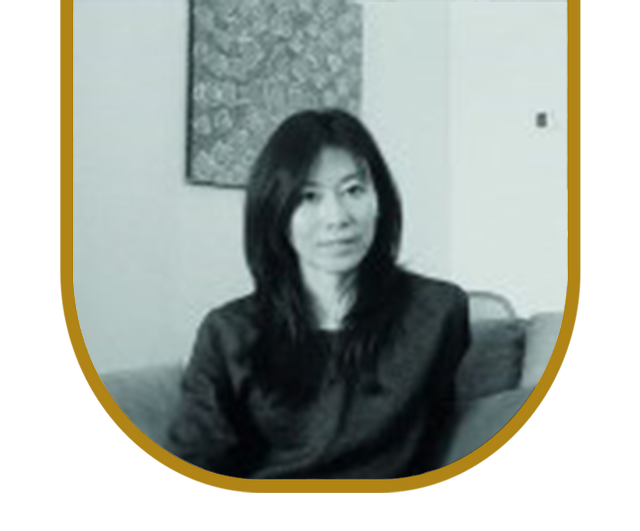
Dr. Natsuko Akagawa is tenured at The University of Queensland. She is a long-standing Expert Member of the International Council on Monuments and Sites (ICOMOS), an Expert Member of the International Committee for Vernacular Architecture (ICOMOS), Expert Member and former Vice President of the International Scientific Committees for Intangible Cultural Heritage (ICOMOS) and member of the International Council of Museums (ICOM). She is regularly invited as a Keynote speaker and has been a member of editorial and peer review boards for numerous high-impact international journals. She is also the Series General Editor for Routledge Research on Museums and Heritage in Asia (Routledge).
Dr. Akagawa is the author of Heritage conservation in Japan’s cultural diplomacy: Heritage, national identity and national interest (Routledge 2014), the seminal work theorizing Heritage and Cultural Diplomacy, and co-editor of Safeguarding Intangible Heritage (Routledge 2019) and Intangible Heritage (Routledge 2009), all internationally influential studies on Intangible Heritage. She has also worked on a number of projects with heritage conservation practitioners as a principal investigator, and with academics in developing policy documents.

Dr. Nicola Cavalagli currently holds an Assistant Professor position at the University of Perugia in Italy. He is a Lecturer in the course of Mechanics of Historic Constructions and of the Laboratory of Architectural Restoration since 2015. His research interests are mainly focused on the analysis of historical constructions, with special attention to the homogenization techniques of masonry material and the analysis of masonry arches, vaults, and domes, considering geometrical uncertainties effects. Recent studies have been devoted to the development of Structural Health Monitoring strategies applied to heritage constructions for their preventive conservation. His research interest includes also civil and architectural engineering in general, finite element modeling, and computational mechanics.
The 6th edition of the International Conference on Conservation of Architectural Heritage (CAH) will be held in collaboration with Palermo University, at Orto Botanico di Palermo.

The Orto Botanico di Palermo is both a museum and a research and educational institution of the University of Palermo, located in the Kalsa district of Palermo. The botanical garden has a collection of over 12,000 different species of plants.
For venue details, click here
Location:
The Botanical Garden of Palermo is located about 700 meters away from the Palermo Centrale train station. The closest bus station is Lincoln-Orto Botanico, located right in front of the garden, on the bus Lines 107, 224, 224P and 231.
The Botanical Garden of the University of Palermo is one of the most significant Italian academic institutions. As a vast open-air museum, the garden allowed the study and the dissemination of innumerable plant species in Sicily, Europe, for over two hundred years, as well as the Mediterranean basin, many native to tropical and subtropical regions.
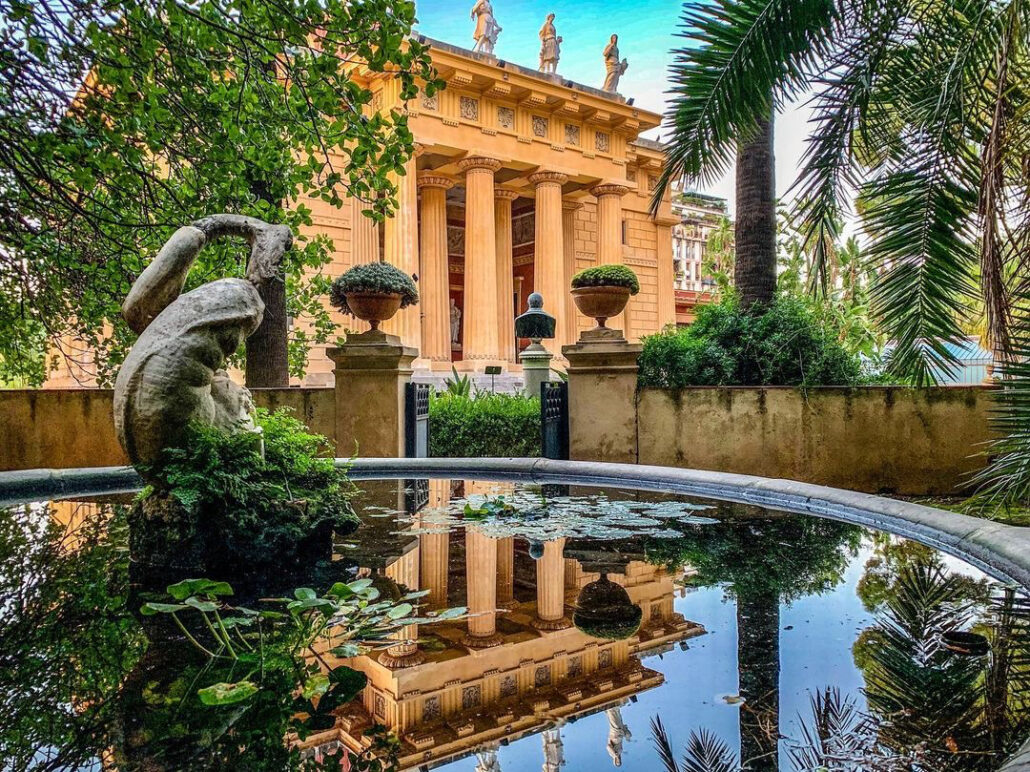
The peculiarity of this garden is represented today by the great variety of species hosted, which make it a place rich in expressions of different flora.
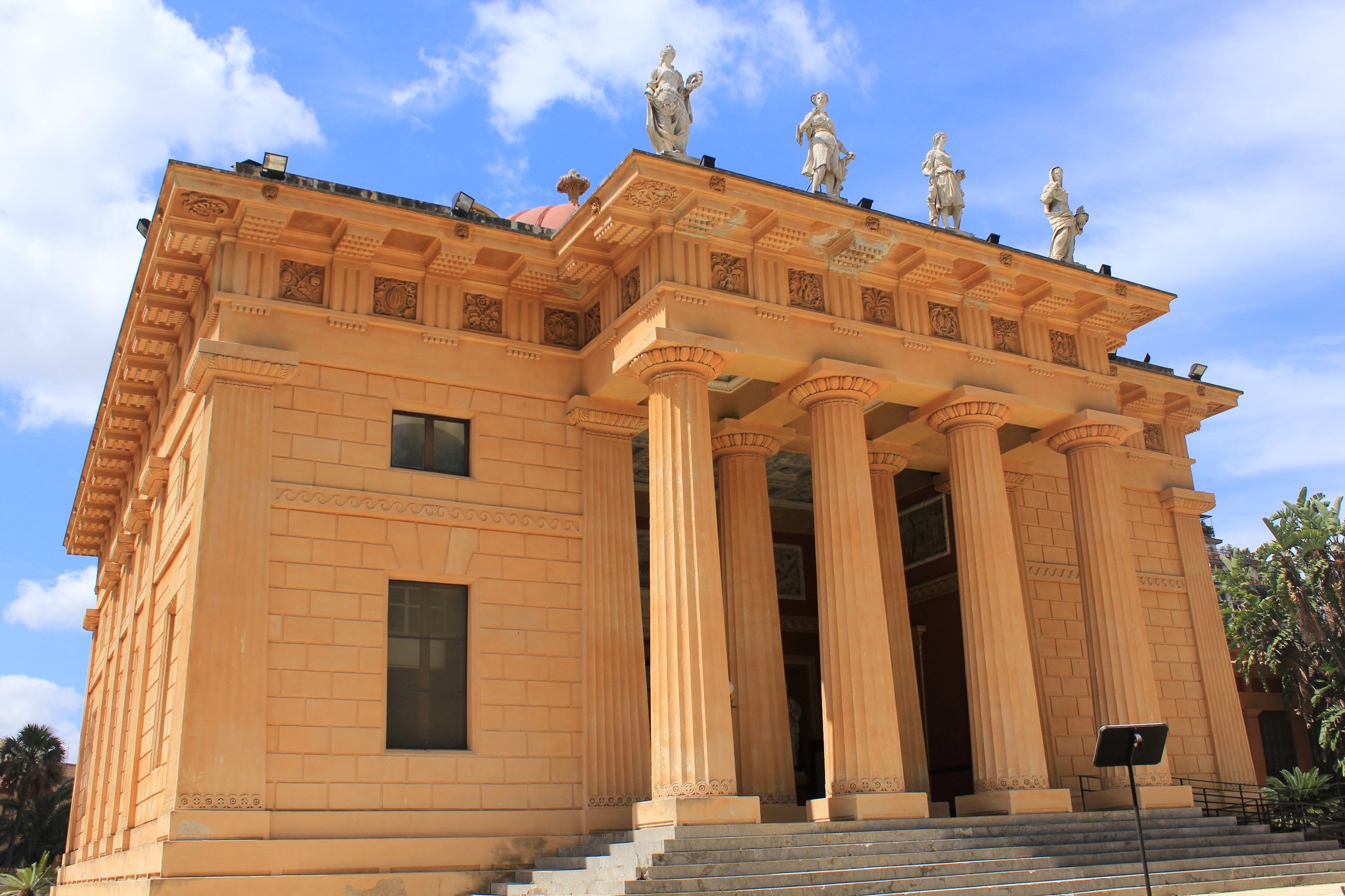
The origin of the Botanical Garden of Palermo dates back to the last decades of the eighteenth century. The monumental complex consisted of a central building, the Gymnasium, seat of the Schola Regia Botanics, which, in addition to an octagonal conference room, included a study gallery, the Herbarium, and accommodation for the director.
Registration
To help the organizers plan for inter-disciplinary dialogue, participants are requested to choose from the conference themes/ Topics upon registration.
They must also refer to, and abide by, the following instructions in registering and submitting their abstracts/ papers:
Types of Participation
Organized from the comfort of your own home, the conference offers a virtual attendance option for your convenience. That said, participants will have a chance to present their abstract/research, online, and have their work considered for publication in the proceedings.
Virtual presenters are required to submit an abstract and extend this abstract following the “author instructions” below and before the deadline (see Important Dates). At least one author must pay the registration fee (see Conference Fees).
For any reason, authors may wish to submit pre-recorded video presentations no later than 15 days prior to the conference. Alternatively, they may wish to record a voice-over PowerPoint presentation for submission to the conference organizers.
Organized on the Campus of Palermo University, Sicily, Italy, offering a Physical attendance option for your convenience. That said, participants will have a chance to present their abstract/research, on campus, and have their work considered for publication in the ASTI Series by Springer as part of the conference proceedings.
See Author Instructions and Conference Fees for more information.
If your extended abstract (short paper) is accepted, it may be published in the conference proceedings book in the Advances in Science, Technology & Innovation Book Series by Springer (indexed in Scopus) even if you are not attending the conference. In this case, the accepted work will not be included in the final conference program and the fee will cover the cost of editorial handling and peer-review evaluation of your paper (See Author Instructions and Publishing Opportunities)
Non-presenting participants may also wish to attend the conference as Audience Members or Co-authors contributing to an already submitted abstract/ paper.
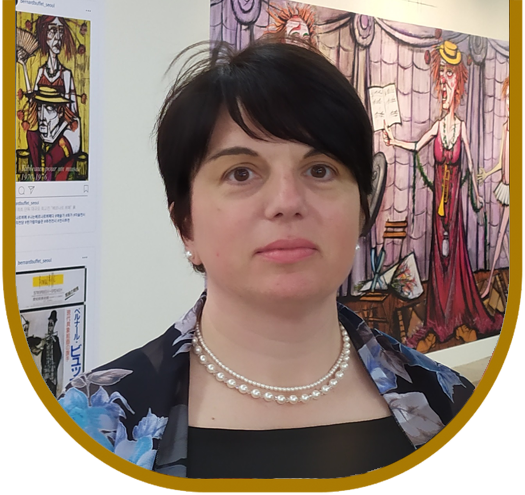
Olimpia Niglio is a Professor in Architectural Restoration at the University of Pavia, Faculty of Engineering. She was a professor in Comparative History of Architecture at Hosei University (Tokyo), Hokkaido University, and Kyoto University Graduate School of Human and Environmental Studies, Japan; Vice President ICOMOS PRERICO and ACLA, Asian Cultural Landscape Association (South Korea -India). In 2020 she has founded the international project “Reconnecting with your culture”. She was Visiting Professor in important Scientific Institutions between Asia and America. Ph.D. (University of Naples-Federico II, Italy), Executive Master at Business School Rome, and Post- Ph.D. (Ministry of Education, Italy). The research covers topics related to the history of comparative architecture, between the Far West and the Far East, in the period of modernization between the nineteenth and twentieth centuries. Since 2015 Scientific Coordinator of the International Project “Italian Diaspora in the World”. Since 2019 Scientific Coordinator of the International Project “Cultural Diplomacy & Heritage”. She is the author of important publications in the field of History and Architecture Restoration. Themes of search: cultural landscape, history of the architectural, and architectural restoration in foreign countries. Since January 2022, from Japan, she is a professor at the University of Pavia by "direct call" promoted by the Law 230 of 2005, Ministry of University (Italy) reserved for excellent scholars who have distinguished themselves abroad for research and academic activities. More information, publications, and academic activities: ORCID: https://orcid.org/0000-0002-5451-0239

Alessandra Battisti is Architect, PhD, Full Professor in Technology of Architecture and Environmental Design in the Department of Planning, Design and Technology of Architecture, Sapienza University of Rome, Italy, where she is: Director of the 2nd level University Master‘s degree course in “Valorisation and enhancement of small Historical centres”, Member of the Faculty Board and Teaching Staff Member for the Ph.D. in Environmental Design & Planning. Since 1993 she has been carrying out research, teaching and experimentation activities on topics such as technological innovation for environmentally aware architecture, buildings ecological and energetic efficiency, bioclimatic approach in design and environmental sustainability, urban analysis and urban regeneration. She holds strong expertise in sustainable architecture, energy building, renewable energy, and their relation with regeneration processes of existing urban fabric and architecture. Expert consultant for the European Community - DG XXII – in the Energy in Building sector; expert consultant on the Roster of Consultants and Permanent Roster of Auditors launched by the MIUR (Italian Ministry of Education, Universities and Research). Member of the Working Group for Energy Efficiency of Cultural Heritage of MiBACT (Italian Ministry of Culture and Tourism). Over 200 scientific publications 14 books. Winner of more than 30 international architectural competitions
Le città tardo Barocche del Val di Noto
When translated, le città tardo Barocche del Val di Noto means late Baroque towns of the Val di Noto. It is constituted of eight towns, Caltagirone, Militello Val di Catania, Catania, Modica, Noto, Palazzolo, Ragusa, and Scicili, located in south-eastern Sicily. These towns were all rebuilt after the tragic earthquake of 1693 that wrecked towns across south-eastern Sicily. They were not only rebuilt by maintaining the style of south-eastern Sicily and Baroque artistic and architectural authenticity in mind but they were also rebuilt in a way that improved their integrity for it to withstand the effects of any future earthquakes.
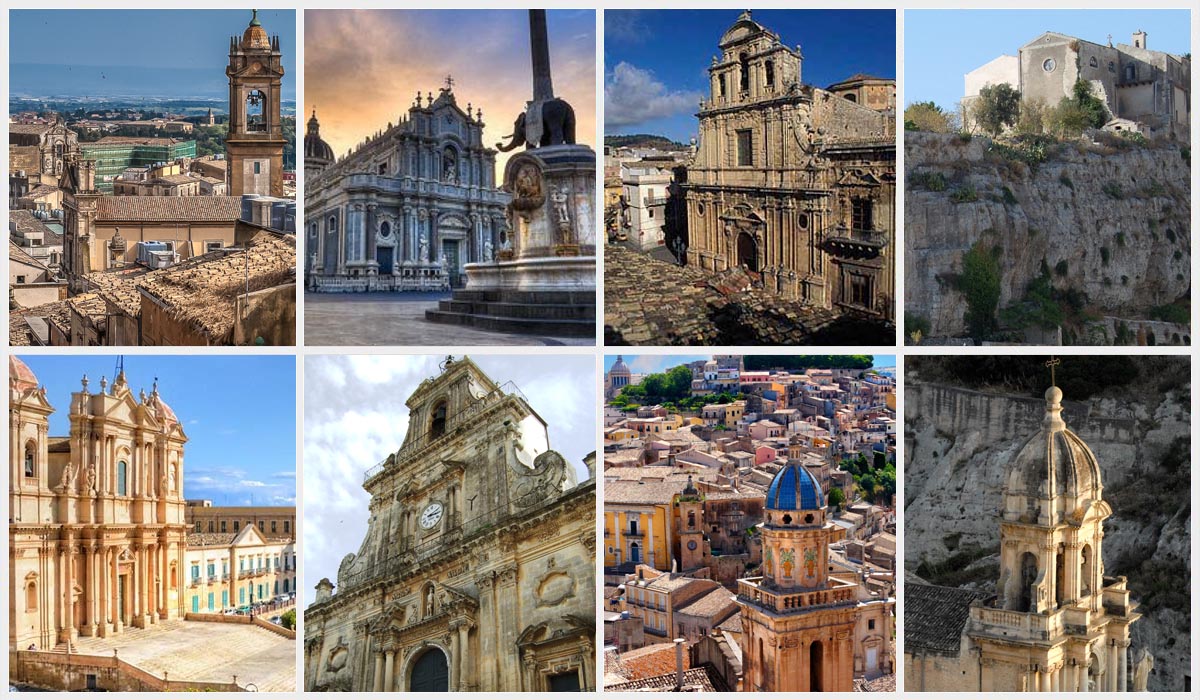
Arab-Norman Palermo and the Cathedral Churches of Cefalú and Monreale
Dated back to the era of the Norman kingdom of Sicily, Arab-Norman Palermo consists of nine civil and religious entities located on the northern coast of Sicily. It consists of two palaces, three churches, a cathedral, a bridge, as well as the cathedrals of Cefalú and Monreale. What makes them so significant, is not only their history but also the fact that they showcase the syncretism between Western, Islamic, and Byzantine cultures on the island, which also highlight the prosperous co-existence of people of different cultures and religions during that period. Such cultures can be seen in the used concepts, the space used, the structure, and decoration.
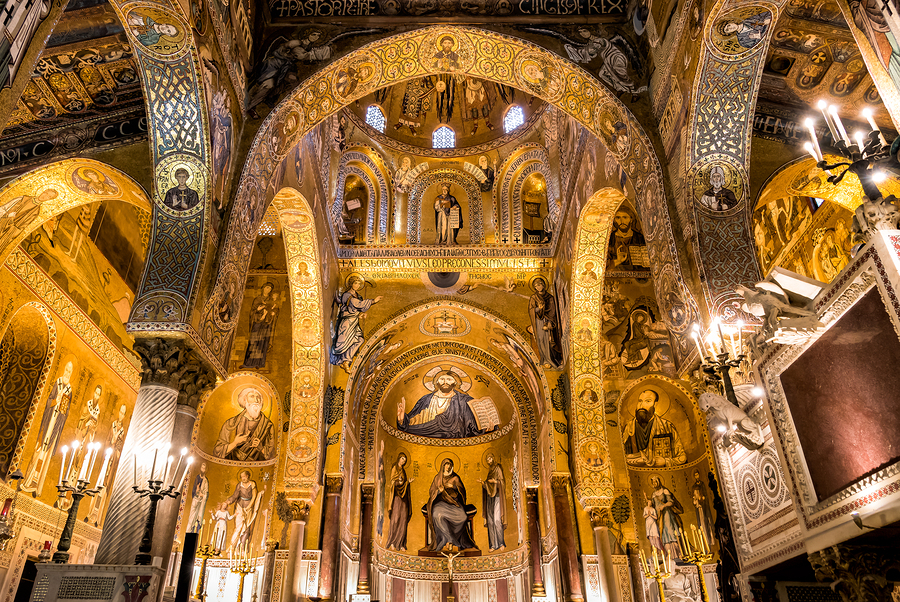
Area Archeologica di Agrigento (Valle dei Templi)
The once Greek city, Agrigento, was one of the greatest cities of the ancient Mediterranean world and was founded in the 6th century B.C. To this day, it counts as one of the most exceptionally preserved cities. The archeological area of Agrigento (the Valley of the Temples) is located along the coast of southern Sicily, covering the ancient territory of the previously Greek community. Centuries later, the Valley of the Temples still consists of some of the most outstanding monuments of Greek art and culture.
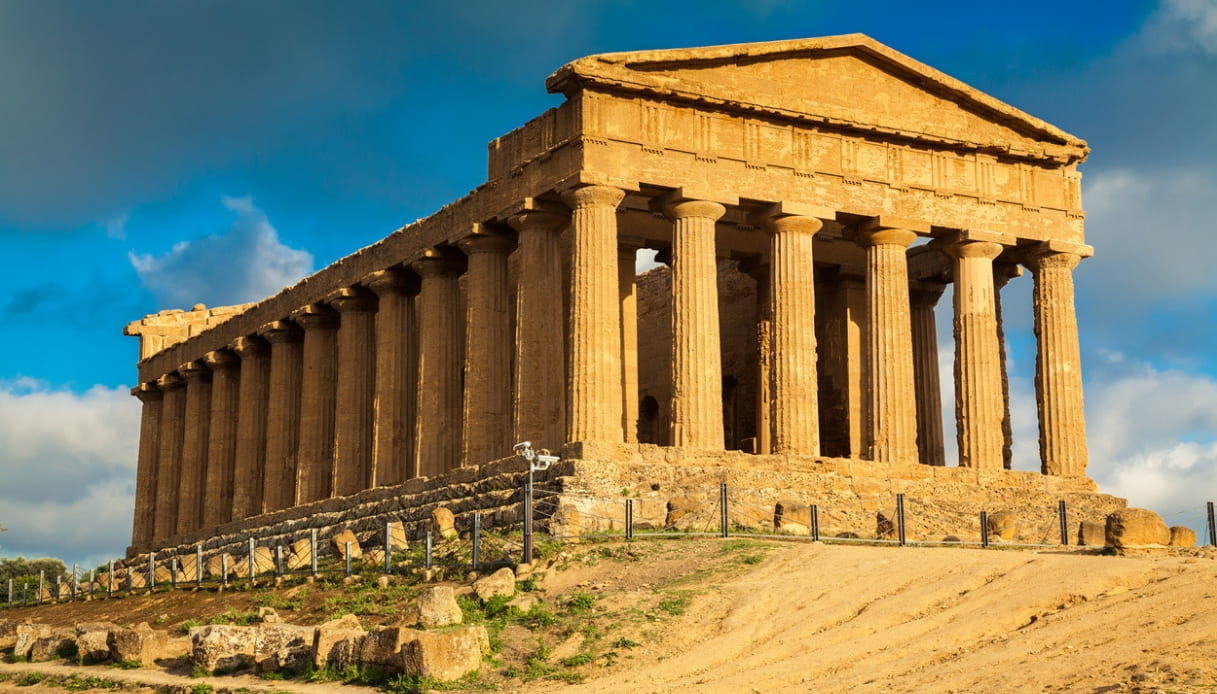
Monte Etna
Located on the eastern coast of Sicily, Mount Etna is the highest Mediterranean island mountain and the most active stratovolcano in the world. Known as an iconic site, Mount Etna encompasses 19,237 uninhabited hectares on the highest part of Mount Etna. Regardless of its continuous eruptive activity, the volcano is home to important terrestrial ecosystems including endemic flora and fauna. What makes this site a relatively interesting destination for research and education is its structure and volcanic features that consist of things such as summit craters, cinder flows, and the Valle del Bove depression.
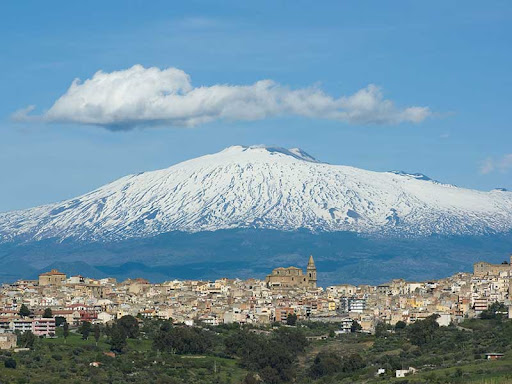
Important Note:
IEREK has an unyielding policy regarding plagiarism. We believe that copying/taking the ideas and work of other Authors without permission and credit is fraudulent. The Reviewing committee and IEREK employees have the authority to reject a paper during its reviewing process, on the basis of the paper being subjected to either minor or major plagiarism.Authors must refer to, and abide by, the following instructions in submitting their abstracts/ papers:
- The author should prepare and submit an Abstract (250 300 words) through the website and before the abstract submission deadline.
- The abstract should clearly state the purpose, results, and conclusions of the work to be described in the final paper.
- The author should select the most relevant topic for the paper from the corresponding conference topics.
- The author can use/download an abstract writing template to submit the abstract file accordingly.
To download the Abstract Writing Template, Click Here
- Upon submission, an abstract will undergo a preliminary evaluation process by members of our scientific committee.
-A relevant topic of the conference should be proposed with clear writing, aims, and objectives of the study clearly presented and sound literature and methodology of the work.
- The author will receive a notification by email, within 2 weeks, of:
Short Paper:
- A short paper submission is within the 3000-6000 word count and suits researches that make significant contributions, but are still in progress or can be reported briefly.
- The structure of a short paper should contain its abstract, keywords, introduction, problem statements, and the hypothetical solution along with further studies that they will go through when they want to extend their paper to be published online.
- A short paper is only included in the Conference abstracts book and will be considered for publication in the ASTI Book Series by Springer if upon selection. If not selected, the manuscript may be published in IEREK Press.
- The author should submit the short paper written on the writing template, through our online system before the paper submission deadline.
- The short paper should be written in English as it's the official language of the conference.
To download the paper writing template, Click Here.
All Chapters will be screened for similarity using iThenticate; a Turnitin Plagiarism detection software, used for academic publishers. Springer Similarity guidelines are as follows:
Once Preliminary approval for presentation at the conference and/or consideration for publication is granted, authors will be expected to complete payment in reference to the Conference Fees.
Note:
In this phase of revision, the research paper will be evaluated based on its originality, structure, and relativity to the conference theme. If the paper gets acceptance by one reviewer, a paper preliminary acceptance notification will be sent to the author accordingly.
- As soon as payment is confirmed and done successfully, corresponding official documents can be issued from our end such as:
Only after payment is confirmed,
- and the paper submission deadline is reached, a submitted paper is assigned to an Editor from the Editorial Board, in alignment with IEREK’s revision SOP (double-blind process).
- Each paper/ chapter is evaluated by a minimum of two reviewers, after which a final decision by the responsible Editor is made. There is no maximum to the number of times a paper can be reviewed, depending on the quality of the submission.
- Once a decision is made by the Editors, IEREK Editors will communicate one of the following three final decisions:
- If modifications are in order, authors will be sent the relevant instructions and a deadline will be set. Missed deadlines may result in complete exclusion from the final publication/ final rejection.
- A back and forth process, modifications will be sent back to the responsible Editor/ Series Editor and another round of evaluation conducted.
Attending a conference dramatically enhances both your professional and personal development. They help you sharpen the saw, meet and converse with industry experts, expand your resources and grow your professional network. IEREK Conference will help you:
1. Open Discussions: We bring together leading academic scientists, from different universities and countries, to exchange and share their experiences and research results.
2. Internationally Accredited Certificate: The participants are granted internationally recognized certificates acknowledged by IEREK, the University, and Partnering Organizations.
3. Publication: Selected high-quality manuscripts will be published, after peer review, in the Advances in Science, Technology & Innovation (ASTI) book series by Springer or by IEREK Press Journals, both of which are indexed in world-renowned databases.
4. Research Technologies: Conferences can expand your resources by providing a great opportunity to promote gathered information on new technologies related to your research.
5. Networking: You can engage with industry experts to discuss with them the very latest research projects they could be working on and increase your chances of collaboration in future projects.
6. Academic Reputation: Attending many conferences will make you a known figure in academic circles and an active member of the academic community.
7. Conference Abstracts Material: Delegates will receive the conference Abstracts book in both hardcover and digital format on a CD. Shipping fees may apply.
| Title | Date |
|---|---|
| Abstract Submissions Deadline | 22 Jan 2022 |
| Last Notification for Abstract Acceptance | 15 Feb 2022 |
| Full Paper Submission Deadline | 23 Mar 2022 |
| Last Notification for Full-Paper Acceptance | 20 Apr 2022 |
| Early Payment Deadline | 24 Feb 2022 |
| Regular Payment Deadline | 30 Mar 2022 |
| Late Payment Deadline | 25 Apr 2022 |
| Letter of Visa (for delegates who need visa entry) | 26 Mar 2022 |
| Letter of Final Acceptance | 26 Mar 2022 |
| Conference Program | 25 Apr 2022 |
| Conference Launch | 25 May 2022 |
| Student | Academic | Professional | Deadline | |
| *ID must be shown | *Affiliation must be provided | *Affiliation must be provided | ||
| Author | ||||
| Early Bird | 300 € | 350 € | 400 € | 24 Feb 2022 |
| Regular Payment | 350 € | 400 € | 500 € | 30 Mar 2022 |
| Late Payment | 450 € | 500 € | 600 € | 26 Apr 2022 |
| Co-author/ Audience | ||||
| Regular Payment | 150 € | 200 € | 250 € | 30 Mar 2022 |
| Student | Academic | Professional | Deadline | |
| *ID must be shown | *Affiliation must be provided | *Affiliation must be provided | ||
| Author | ||||
| Regular Payment | 200 € | 250 € | 250 € | 30 Mar 2022 |
| Late Payment | 300 € | 350 € | 350 € |
26 Apr 2022 |
| Co-author/ Audience | ||||
| Regular Payment | 50 € | 50 € | 50 € | 30 Mar 2022 |
| Additional Conference Kit (Excluding Delivery) *Contact us for a quotation on shipping fees. | 100 € |
*Authors may request that their kits be delivered, for an additional fee decided by the courier, and upon request. Alternatively, authors located in Egypt can pick them up from Cairo/ Alexandria office.
Payment Terms and Guidelines:
|
Cancellation Policy |
Up to 60 days before the event |
Up to 50 days before the event |
Up to 40 days before the event |
39 days before the event |
|
Penalty |
20% |
50% |
70% |
100% |
EXCEPTION
A refund is not possible if
-An acceptance letter has been issued (Authors only)
-The proceedings of the event have been published (Authors only)
-All matters have been finalized (accommodation/travel expenses paid for)
Visa Rejection Cases
Reason and proof of rejection must be submitted. If the reason for rejection is due to an error on our part, the participant will be refunded their full fee with a deduction of a 20% administration fee.
Documents to be issued by IEREK to acquire a visa are as follows:
*Final Acceptance Letter (Authors only)
*Visa Invitation Letter
*Invoice/proof of payment
We encourage all authors and attendees to ensure their having acquired all documents (those applicable) mentioned.
If the reason for rejection is not related to any of the aforementioned and is an error on the participant’s part, the following will apply:
*Authors: may choose to let their co-author present his/her research on his/her behalf free of charge. If the author does not have a co-author, a member of the scientific committee shall present on the author’s behalf.
*Audience members/Registrants: will only be allowed to attend another similar event of their choosing that is organized by IEREK free of charge.
Delegates in any event who cancel their registration due to special circumstances will receive refunds according to the following:
|
Cancellation Policy |
Up to 60 days before the event |
59 days before the event |
|
Penalty |
20% |
100% |
A refund is not possible if
- An acceptance letter has been issued (Authors only)
- The proceedings of the event have been published (Authors only)
- A submitted manuscript is rejected by the editorial board after going through peer review.
The International Conference on Conservation of Architectural Heritage was held aboard the Grand Palm Nile Cruise, for 5 days, which had sightseeing trips for the historical, cultural, and architectural sites. As well as holding of the “Folk Art Gallery” by Amr Bayoumi & Ola Bayoumi. The conference was chaired by Professor Douglas C. Comer (the Co- president of ICAHM for ICOMOS.) and organized by IEREK.
The opening session was held onboard the Nile cruise right after the arrival of the delegates and the visit of Luxor temple, which was opened by a welcoming word from the CEO of IEREK. It was then followed by Prof. Douglas C. Comer (the Co- president of ICAHM for ICOMOS.), Prof. Ahmed Rashed (former head of Architecture Department at the British University in Egypt, and the founding director of (CSFS)), Prof. Antonella Versace (Professor at University Kore of Enna, Italy), and finally Mr. Mohamed Badr (Governor of Luxor).
After an introduction about the conference and its delegates was made, the conference officially started with the sessions.
The plenary session titled “Development and Promotion of the Architectural Heritage through Tourism Forms” was run by the following professors:
– Prof. Douglas Comer (Principal, Cultural Site Research and Management, Inc. “CSRM” & Conference Chairman)
-Prof. Antonella Versaci (Kore University of Enna, Italy & Scientific Coordinator of the Conference)
-Prof. Ahmed Rashed (British University in Egypt “BUE”)
-Dr. Monica Hanna (American University in Cairo “AUC”, Egypt)
-Dr. Mohammed Assem Hanafy (University of Alexandria, Egypt)
-Hamdy Elsetouhy (Researcher and Specialist in Conservation)
The first day included a guided tour to Luxor temple. Later there was an optional trip to the light and sound show at Karnak Temple.
On the second day, the delegates moved to the west bank of Luxor to visit the Colossi of Memnon, Hatshepsut’s Temple, as well as an Alabaster factory and bought some alabaster-made souvenirs. Later, there was an optional trip to the Valley of the Kings.
The third day included a visit to Edfu temple in Edfu city, followed later by a visit to Kom Ombo temple when the Nile Cruise reached the city of Kom Ombo. The fourth and last day was spent in Aswan where visits were made to the High Dam, a modern-age site, followed by a visit using motor boats to Philae Temple on Agilkia Island. Following that, the attendees were given the option to visit the botanical island and a Nubian village.
Check this conference’s overview here:
https://www.ierek.com/events/conservation-architectural-heritage-cah#overview
The 2nd International conference on the Conservation of Architectural Heritage in Egypt has been successfully held in Aswan: one of the most significant historical cities existing today.
This conference witnessed the attendance of planners, environmentalists, archeologists, architects, engineers, tourists, policy makers and stakeholders who are interested in the conservation of architectural heritage. Having been filled with participants from diversified fields, approximately 80 full paper submissions were received and 50 of them were presented over several sessions.
Authors attending came from different backgrounds and cultures to discuss research on the conservation of archaeological, architectural and urban landscapes, and multi-disciplinary research on complex Cultural Heritage sites. Held on a Nile Cruise that Sailed from Aswan to Luxor, the conference was attended by authors from Australia, Kuwait, Lebanon, Saudi Arabia, Greece, Egypt and more. With Professor Douglas C. Comer, an archaeologist and the co-president of the United States Committee for ICOMOS (US/ICOMOS), as the Chairperson of the conference, promising conclusions have been reached and recommendations made.
The first day included a guided tour to Luxor temple. Later there was an optional trip to the light and sound show at Karnak Temple.
On the second day, the delegates moved to the west bank of Luxor to visit the Colossi of Memnon, Hatshepsut’s Temple, as well as an Alabaster factory and bought some alabaster-made souvenirs. Later, there was an optional trip to the Valley of the Kings.
The third day included a visit to Edfu temple in Edfu city, followed later by a visit to Kom Ombo temple when the Nile Cruise reached the city of Kom Ombo. The fourth and last day was spent in Aswan where visits were made to the High Dam, a modern-age site, followed by a visit using motor boats to Philae Temple on Agilkia Island. Following that, the attendees were given the option to visit the botanical island and a Nubian village.
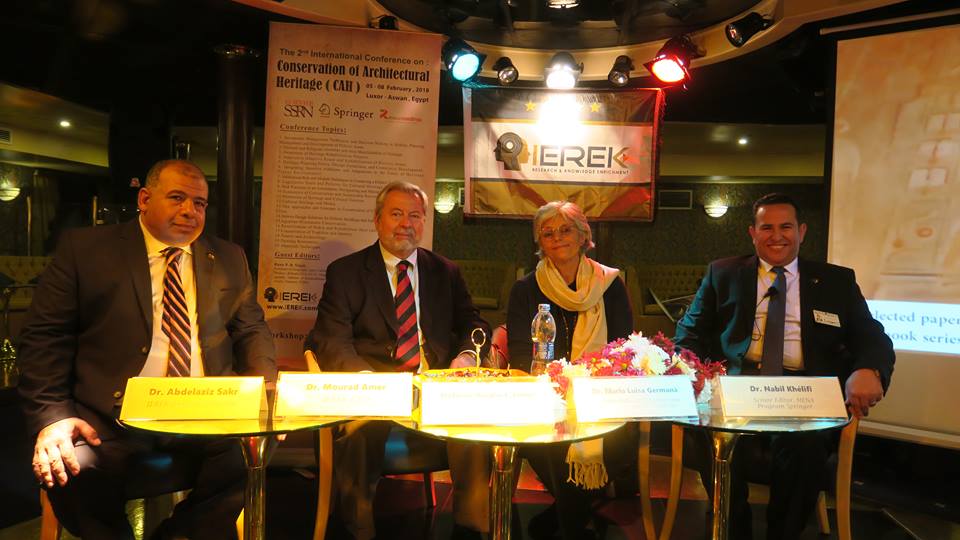
Check this conference’s overview here:
https://www.ierek.com/events/conservation-architectural-heritage-cah-2#overview
The 3rd International Conference on “Conservation of Architectural Heritage (CAH)” was held from on 19th to 22nd of February 2019 in association with Faculty of Engineering at Shoubra - Benha Unversity. The conference included many discussions, covered extremely important topics, and presented new scientific values in the scope of conserving the architectural heritage. For the third time, it was a very successful conference that cannot be forgotten.
The international conference was held in Aswan, Egypt, specifically at The Nubian Museum, which is considered to be a gateway to the history of Nubia and one of the most attractive touristic sites in Aswan.
This year, the conference was held under the patronage of Dr. Khaled Abdel Ghaffar (Minister of Higher Education and Scientific Research), Prof. Hussein El-Maghraby (President of Benha University), and The Supreme Council of Antiquities. It was also chaired by Prof. Ragab Megahed (Dean of Faculty of Engineering at Shoubra - Benha Unversity).
First Day: Opening Ceremony and Keynote Speeches
The opening ceremony started with greetings and short-introductions by:
Prof. Tarek Tawfik, General Director of the Grand Egyptian Museum
Prof. Ferdinando Trapani, Associate professor in Urban Planning, Università degli Studi di Palermo, Italy
Prof. Francesco Alberti, Associate professor of Urban planning and design at University of Florence, DIDA - Department of Architecture
Prof. Hussein El-Maghraby, President of Benha University
Dr. Abdel Moneim Saeed, General Director of Aswan and Nubian Antiquities
Dr. Ossama A.W Abd El Maguid, The Head Director of Nubia Museum
The opening ceremony witnessed highly-important speeches especially by the 2 Italian professors Ferdinando Trapani & Francesco Alberti who stressed on the necessity of collaboration and knowledge exchange between Egypt & Italy in the scope of conservation and preservation. The professors also presented the model of "conservation of heritage in Palermo" at the conference, which is considered a living example of exchanging knowledge between 2 great civilizations.
After the lunch break, authors (researchers) started to present a demo of their research paper in oral presentations while session chairman and moderators listen, discuss, and evaluate.
Second Day: The Parallel Sessions Continued & Start of the Workshop
Starting from the 2nd day, remaining authors (researchers) continued presenting their research papers while other participants (students) joined the accompanying workshop titled “Site Management of The Archaeological Sites”.
This workshop examined the interchangeable relationship between the archaeological sites and the historic monuments, and how they affect each other.
At the Nubian Museum, the workshop students obtained great lectures by well-known professors from the University of Benha, such as Prof. Khaled Abd El Hady, Prof. Mostafa Atalla, Prof. Amr Hanafy, Dr. Mona yehia, and Prof. Sadek Saad.
Third Day: Workshop Continued & Site Visit
The day started early with a tour visit to The Unfinished Obelisk (The largest known ancient obelisk and is located in the northern region of the stone quarries of ancient Egypt in Aswan), where a lecture was given by Prof. Khaled Abd El Hady, in addition to group work with participants.
Another tour visit to Temple of ISIS was also organized. Moreover, after lunch, the last visit was made to The Temple of Kom Ombo where all workshop participants enjoyed the scenes and gained a lot of knowledge about heritage in Egypt.
Fourth Day: Pin Up Presentation
At The Nubian Museum, many discussions and group work feedback have taken place regarding what they have seen and learned through this conference and accompanying workshop.
Finally, group photos of all conference participants were taken.
Check this conference’s overview here:
The 4th International Conference on the Conservation of Architectural Heritage in Egypt has been successfully held in Aswan: one of the most significant historical cities existing today.
This conference witnessed the attendance of planners, environmentalists, archeologists, architects, engineers, tourists, policymakers, and stakeholders who are interested in the conservation of architectural heritage. Having been filled with participants from diversified fields, approximately 60 full paper submissions were received and 30 of them were presented over several sessions.
Authors attending came from different backgrounds and cultures to discuss research on the conservation of archaeological, architectural and urban landscapes, and multi-disciplinary research on complex Cultural Heritage sites. Held on a Nile Cruise that Sailed from Aswan to Luxor. The conference was attended and moderated by the Stella kostopoulou from the Aristotle University of Thessaloniki (AUTh), Greece.
It was also moderated by:
Fabio Pollice from the University of Salento, Lecce, Italy.
Ferdinando Trapani from the University of Palermo, Palermo, Italy.
Luca Lanini from the University of Pisa, Pisa, Italy.
The first day was spent in Aswan where visits were made to the High Dam, a modern-age site, followed by a visit using motorboats to Philae Temple on Agilkia Island. Following that, the conference opening ceremony.
The second day included a visit to Kom Ombo temple when the Nile Cruise reached the city of Kom Ombo followed later by a visit to Edfu temple in Edfu city,
The third day included a guided tour to the Luxor temple and Karnak Temple.
On the last day, the delegates moved to the west bank of Luxor to visit the Colossi of Memnon, Hatshepsut’s Temple, as well as an Alabaster factory and bought some alabaster-made souvenirs. Later, a trip to the Valley of the Kings.
Check this conference’s page here:
For IEREK's Previous Publications, Please Click here
- Conservation of Architectural Heritage (CAH) held on a Nile cruise from Luxor to Aswan in November 2015.

- Conservation of Architectural Heritage (CAH) -2nd Edition held on a Nile cruise from Aswan to Luxor in February 2018.


- Conservation of Architectural Heritage (CAH) -3rd Edition held at the Nubian Museum, Aswan in February 2019.


- Conservation of Architectural Heritage (CAH) -4th Edition held on a Nile cruise sailing from Aswan to Luxor in February 2020.

- Conservation of Architectural Heritage (CAH) - 5th Edition held as an Online Conference in February 2021.

- For participants who need Entry Visas to the country where the conference will be held, IEREK will issue the corresponding invitation letter for accepted applicants to facilitate visa issuance.
- Please notice that we will endeavor to assist you in obtaining a visa but the responsibility is yours and the decision rests solely with the appropriate Embassy.
Invitation Letter Issuance Process
1- In case the participant is an author who has submitted a research paper to the conference, it must get accepted by the Scientific Committee
2- Required participation fees must be paid
3- The participant should send the following information to the conference's official email:
* A clear copy of passport
* Passport number
* Full name as written in your passport.
* Date of Issuing and Expiration
* Date of Birth
* Email address of the nearest Embassy/Consulate to you
* Mobile Number including country code
4- Conference coordinator will issue the needful invitation letter and send a copy to the participant's email, in addition to another one to the corresponding email address of embassy/consulate
5- The participant should print out the invitation letter along with all other required documents by the embassy/consulate and apply for VISA
Sicily is the largest island in the Mediterranean and it is one of the most fascinating places of the area, an amazing land rich in history and traditions, where art and culture intertwine with wonderful natural beauties. From the sea to the mountains. In the list of the Unesco's World Heritage sites there are seven Sicilian places: in addition to the Baroque cities Noto, Modica and Ragusa
The main airports in Sicily are the ones of Palermo and Catania, you can choose where to fly to. Here we will give you a few hints about both airports:
1- Palermo - Falcone Borsellino Airport
Located about 35 Km from the city, it is one of the most ancient Italian airports. It offers many international connections, daily flights from/ the most important Italian cities as well as from/to the islands of Lampedusa and Pantelleria.
Address: 90045 Cinisi, Province of Palermo, Italy.
Location on map: Palermo - Falcone Borsellino Airport
Bus stations
The bus stops for all destinations are located at the exit of the terminal, you can find here all the routes for major locations and reference information.
Address: 90045 Punta Raisi PA, Italy.
Location on map: Punta Raisi
Address: 95121 Catania, Province of Catania, Italy
Location on map: Capolinea ALIBUS
Train station
The railway station is located at the basement of the Terminal. The service to and from the airport, works every day.
Taxi
Located at the Arrivals exit, there is an airport Taxi service which has been coordinated with the flight arrival timetable. Should there be no taxi available, you can call the taxi service by telephoning one of the numbers below (about a 20 minute wait).
Coop. Trinacria: +39 091-225455 +39 091 6878
Coop. Taxi car radio: +39 091-513311 +39 091 8481
2- Catania-Fontanarossa Airport
It is the main Sicilian airport and the first mayor one of southern Italy. This airport has a high volume of international air traffic from/to European and extra-European destinations. It is located 4.3 km southwest of Catania.
Address: Via Fontanarossa, 95121 Catania CT, Italy.
Location on map: Catania-Fontanarossa Airport
Bus stations
The bus stops for all destinations are located at the exit of the terminal, you can find here all the routes for major locations and reference information.
Address: 95121 Catania, Province of Catania, Italy.
Location on map: Fermata AMT
Address: 95121 Catania, Province of Catania, Italy
Location on map: Capolinea ALIBUS
Train station
The airport is connected to the "Fontanarossa" railway stop, about 600 meters from the airport. the shuttle is free every 10 minutes, from 4.30 am to 10.40 pm. at the train arrival time.
Location on map: Catania Airport-Fontanarossa Station
Taxi
Taxis are located when you exit the Arrivals floor. The cars used for the taxi service of the City of Catania are white and are distinguishable by the word “TAXI” on the roof and according to the license identification number.
The numbers to call for the service are:
Radiotaxi : +39 095 330966 Night-time service : +39 095 386794
These are the suggested hotels that you can use for accommodation during the period of the conference. You can reserve your place by contacting the hotel or through their website or any booking website.
Please note:
To manage the travel and accommodation problems, you can contact:
Via Imperatore Federico 72
90143 Palermo (PA)
p.i. 06058280824
The contact person is: GIORGIO SAMPERI: +393925302632
|
Hotel |
Address |
Contact |
|
Via Butera, 47, 90133 Palermo PA, Italy Location on map: Maral Srl |
+39 091 617 56 78 |
|
|
Via Butera, 47, 90133 Palermo PA, Italy Location on map: Hotel Palazzo Sitano |
[email protected] |
|
|
Via Porta di Castro, 75/77, 90134 Palermo PA, Italy Location on map: Il Giardino di Ballarò Boutique Hotel |
+39 091212215 |
|
|
Via Roma, 72, 90133 Palermo PA, Italy Location on map: Hotel Del Centro |
+39 0916170376 |
|
|
Via Bottai, 9, 90133 Palermo PA, Italy Location on map: Kalamarina Rooms |
+39 347 59 01 917 |
|
|
Via Butera, 45, 90133 Palermo PA, Italy Location on map: Hotel Porta Felice |
+39 091 617.56.78 |
|
|
Via dei, Via Cartari, 18, 90133 Palermo PA, Italy Location on map: Grand Hotel Piazza Borsa |
+39 091 320075 |
|
|
Foro Italico Umberto I, 13, 90133 Palermo PA, Italy Location on map: L' Hôtellerie |
+39 339 5898058 |




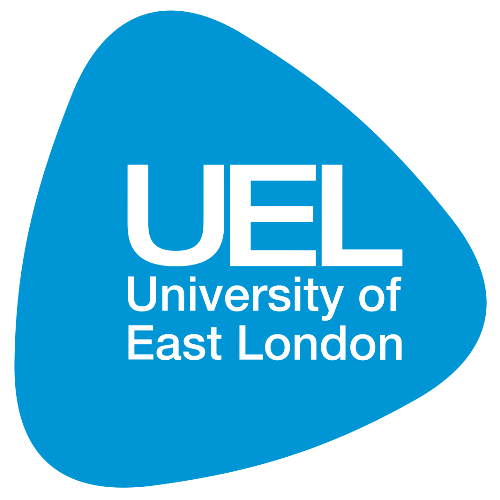







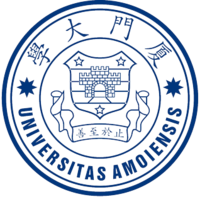

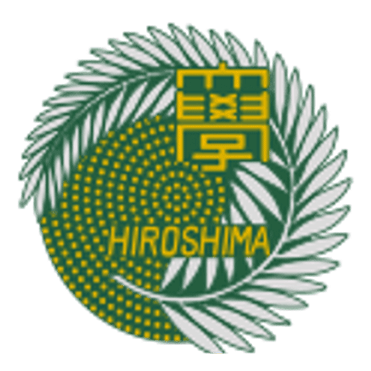
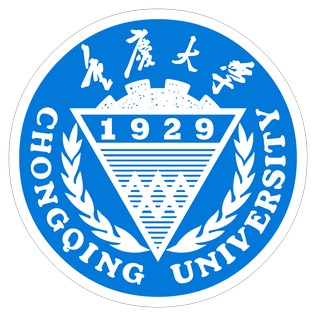
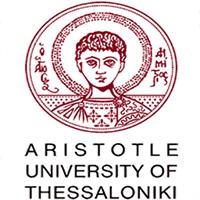
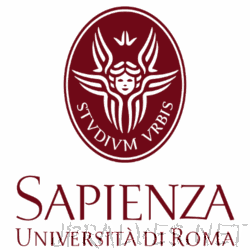
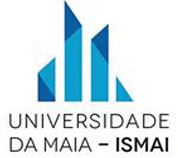



Prof. Maria Luisa Germanà
Professor at the Department of Architecture, University of Palermo.
The World Association of Professional Scientists (WAPS) is a community alliance that consists of scientists, academics, and experts in diversified fields.
Members of WAPS could participate in IEREK's conferences as session moderators, keynote speakers, or conference chairs.
You can know more about WAPS members from HERE.
Subscribe to our newsletter
Join IEREK community